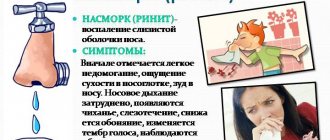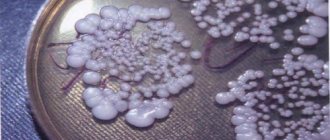- June 22, 2018
- Infectious diseases
- Natalia Kalinichenko
Whooping cough is an infectious disease with the main symptom of cough, which lasts up to 3 months. During an exacerbation, the cough is characterized by severe and convulsive attacks.
The causative agent of the disease is pertussis bacillus. You can only get whooping cough from a sick person, since the bacterium does not live long outside the human body. Patients at the initial stage are especially dangerous. The probability of becoming infected from a carrier of infection upon contact with him is 90%. The risk of becoming infected from objects with which the patient has been in contact is practically zero.
This type of pathology is characteristic of children from 1 to 5 years of age. The risk of getting whooping cough again is minimal.
Characteristic features of the pathology
A specific cough as the main symptom plays a decisive role in correctly diagnosing the disease. Treatment of whooping cough with folk remedies in children must be approved by a physician.
The disease begins with a slight runny nose and a slight cough. Everything is very reminiscent of a common cold or bronchitis.
At first, no increase in temperature is observed, then the baby’s temperature rises only in the evening, and very strongly, up to 40 degrees. During the daytime, body temperature stabilizes.
It is not possible to get rid of a cough at the first stage by any means, even pharmaceuticals. During the first two weeks, the cough appears constantly, then subsides, then intensifies. Subsequently, attacks occur more often at night than during the day. Moreover, coughing attacks can occur against the background of almost any irritant. It could be dust or excitement.
During a paroxysmal cough, the child may turn blue from exertion, and after the attack ends, vomiting often occurs. In some cases, coughing even leads to involuntary urination.
Whooping cough symptoms
The incubation period of the disease from the moment of infection to the appearance of the first symptoms of whooping cough is 5-14 days. At this time, the bacterium colonizes the respiratory tract.
The next period is called prodromal or catarrhal, when harbingers of the disease appear. The average duration of this period is 7-14 days.
It is characterized by the following symptoms:
- A person develops a dry cough, which does not bother him too much during the daytime, but intensifies in the evening.
- Body temperature can rise to 38 °C.
- A slight runny nose may occur.
- In general, the person feels satisfactory, his health is not significantly impaired.
The prodromal period of whooping cough resembles the development of a common acute respiratory infection, so at this stage diagnosis is extremely difficult.
The next stage of the disease is called the spasmodic period.
It is characterized by the following symptoms:
- The cough becomes paroxysmal.
- It always ends with convulsive twitching of the body.
- Cough shocks are accompanied by sputum production.
- Vomiting may occur at the end of the attack.
- During a cough, a change in complexion is often observed; it becomes bluish-red. The tongue is stuck out.
- Number of attacks per day: 5-40.
- Cough is more common during night rest.
- An attack is characterized by apnea, when a person stops breathing for a period of 30 to 60 seconds.
- A severe attack may result in involuntary loss of urine and feces.
- A characteristic sign of whooping cough is the formation of ulcers on the frenulum of the tongue, since during coughing the patient injures it with the lower incisors.
The final stage of the disease is the period of reverse development. It is characterized by a gradual fading of symptoms and stabilization of body temperature.
It should be noted that even after the body completely defeats the disease, the cough will haunt it for some time. The average time for complete disappearance of cough is 3 weeks.
For another 6 months, a person may continue to experience increased irritability and fatigue. Immunity during illness is significantly reduced, so the body is susceptible to various respiratory viral diseases.
What to do?
It may not sound very correct, but there is good news; there is still an effective treatment for whooping cough in children using folk remedies.
During the period of treatment and rehabilitation, you should adhere to some rules, the observance of which will allow you to get rid of the disease as quickly as possible:
- the baby’s room should not be hot, even cool is better, but he should be dressed in warm clothes to prevent hypothermia;
- at the initial stage, bed rest should be observed;
- introduce into the diet the necessary amount of foods high in vitamin C;
- Frequent but short walks in the fresh air are recommended;
- food should be predominantly liquid, but high in calories and fortified.
It should be understood that even with treatment at home, the patient must be isolated from others for about 40 days.
What you need to know about whooping cough
The disease is widespread, but in cities, compared to rural areas, it is diagnosed more often. This is due to the large overcrowding of the population in large cities, environmentally unfavorable urban air and more scrupulous diagnostics (in villages and towns, erased forms are not diagnosed due to less epidemiological alertness).
Like other respiratory pathologies of an infectious nature, whooping cough is characterized by a seasonal incidence with an increase in the frequency of recorded cases of infection during the transition periods - spring-summer and autumn-winter.
Recently, the incidence of the disease among adolescents has increased. Doctors explain this by a general decrease in the body’s protective properties, as well as an increase in the number of refusals to vaccinate.
Reasons for the development of the disease
Whooping cough is transmitted by airborne droplets. The causative agent of the disease is Bordetella or Bordet-Gengou bacillus. It is named after the scientists who discovered it. Bordetella has a “relative” - Bordetella parawhooping cough, which provokes the development of pathology, the clinical manifestations of which repeat the symptoms of whooping cough, but occur in a mild form.
Whooping cough is classified as a so-called childhood infection. The proportion of children among patients is more than 95%. According to statistics, children aged 1-7 years are more susceptible to the occurrence of pathology. At the same time, in the adult population, the pathology often occurs in an erased form.
The gateway of infection in whooping cough is the URT. The source of infection is an infected person or carrier. The main cause of the disease is the penetration of the pathogen into the body.
Symptoms
The symptoms of this disease are pronounced and usually develop after approximately three weeks after infection. The pathology is characterized by the following symptoms:
- cough, at first dry, weak, gradually increasing, intrusive and paroxysmal;
- slight increase in temperature;
- malaise;
- irritability;
- loss of appetite;
- runny nose.
The spastic period is characterized by paroxysmal cough, convulsions, sputum production, and vomiting.
The skin of the face turns blue-red during an attack. If such symptoms appear, you should immediately seek help from a qualified specialist. You should not self-medicate, this is fraught with disastrous consequences. Pathology can only be treated by a doctor and only after conducting the necessary examination.
Along with drug therapy, good results can be achieved using alternative medicine. You will learn further about how to treat whooping cough using folk remedies.
Features of the disease in children and adults
Characteristic symptoms of the pathology usually occur in young children and adolescents. In adults, the disease often occurs in an erased form. In newborns, the course of the disease is especially severe and is often accompanied by the development of complications, in particular secondary pneumonia.
At the same time, the duration of periods of clinical manifestations changes. There is a reduction in the incubation period to five days and catarrhal period to seven. At the same time, there is a significant prolongation of the period of spasmodic cough - up to three months.
In addition, during a whooping cough attack in newborns there are no repetitions. The attack often ends with short-term respiratory arrest and convulsions.
Treatment of pathology should be appropriate and timely. Ignoring the manifestations of the disease is fraught with the following complications:
- bronchitis;
- pneumonia;
- encephalopathy;
- inguinal or umbilical hernia;
- bleeding in the eyes or brain;
- rectal prolapse.
Important Tips
In parallel with the medications prescribed by your doctor, you can use folk remedies for whooping cough.
Preparations from medicinal plants are safe and effective. Moreover, they consist entirely of natural ingredients, which means that they will not harm even children. However, it is not recommended to use herbal formulations without the knowledge of a doctor. Before using any alternative medicine, consult your doctor regarding the appropriateness and usefulness of the composition.
Traditional medicine has a large number of methods and recipes for medicines. But before you start using them, you need to familiarize yourself with several recommendations regarding the treatment of whooping cough.
- People who have been diagnosed with pathology need to take more and more frequent walks in the fresh air. The best option is two-hour walks every day. They will help relieve attacks, improve general condition and well-being, and also serve as a prevention of oxygen starvation of the brain.
- Carry out wet cleaning at home more often.
- Ventilate the room more often.
- Get more rest.
- Avoid stressful situations and nervous shocks.
- Adjust your diet. Patients are advised to avoid eating fatty, dry, salty foods, too hot dishes, rich soups, fatty fish and meats, processed foods, fast food, spices, smoked products, canned food, dry cookies, nuts, alcoholic beverages, strong tea and coffee.
The simplest recipes
Symptoms of whooping cough in adults and treatment with folk remedies are not much different from therapy in childhood.
First of all, you will need to increase your daily water intake. You can use boiled milk with garlic as a drink. Instead of garlic, figs are sometimes used, which are also boiled in milk.
Honey and butter give good results. The components are mixed in a 1:1 ratio. The mixture should be consumed several times throughout the day.
Instead of tea, you can drink a drink made from plantain leaves.
It is also recommended to make a breast rub. You will need butter and crushed garlic, mix the ingredients well, and apply the resulting product to the chest area.
Honey
In the treatment of whooping cough with folk remedies in children, honey can be used, provided that there is no allergy to it.
The simplest recipe: boil 1 medium-sized lemon in a small amount of water. Cook the lemon over low heat for about 10 minutes. Then cool and squeeze out the juice. Then mix it with glycerin (2 tablespoons) and place the resulting mixture in a glass, pour honey over everything.
If a child’s cough is rare, then the honey mixture can be given only once a day, preferably before bedtime. If the cough is frequent, then you can give it up to 4 times a day, in the morning, on an empty stomach, before bed, before lunch and after. Single dose – 1 teaspoon.
You can prepare the product with honey and anise. To do this you will need 1 teaspoon of honey, 2 tablespoons of anise seeds and a little salt. All components are thoroughly mixed and filled with water (250 milliliters). The mixture is brought to a boil and filtered. Should be taken regularly, every two hours, until the symptoms subside, 2 tablespoons.
You can prepare a remedy from burnt calamus root and honey. By the way, this recipe is classified as a quick treatment for whooping cough with folk remedies. Burnt calamus root (a pinch) is mixed with a spoon of honey, and the resulting mixture is used for severe coughing attacks. The beneficial properties of calamus (as a cough remedy) have long been known, even its benefits are recognized at the level of official medicine.
Diagnosis of whooping cough
The symptoms of an infectious cough in the first stage are similar to a cold or flu, which makes it difficult to diagnose whooping cough. Even experienced doctors recognize the disease only at the 2nd stage of its development. In order to exclude pneumonia and tuberculosis, a chest x-ray is prescribed. An increase in the level of leukocytes and lymphocytes in a blood test does not confirm the development of whooping cough, it only proves the presence of infection in the body.
Effective ways to determine the cause of a spasmodic cough are a nasal swab and sputum culture. The latter includes a laboratory test in which the patient coughs onto a special plate coated with a nutrient medium. It is placed in a thermostat and after a certain time the appearance of a colony of pertussis bacteria is observed, which confirms the primary diagnosis.
Article on the topic: Oats for the liver - how to brew and take correctly
Treatment of whooping cough in adults
Treatment of infectious cough without complications can be carried out on an outpatient basis in accordance with the regimen determined by the doctor. Treatment of whooping cough requires an integrated approach, including medications, folk remedies and adherence to general rules . The latter include:
- isolation of the patient from others;
- daily wet cleaning and ventilation of the room with an infected person;
- eliminating factors that provoke a painful cough (smoking, exhaust fumes, wind).
Drug therapy
Treatment of an upper respiratory tract infection involves the use of antibiotics. The effective period for drug treatment is the first 14 days. After 3 weeks, it is not advisable to use antibiotics for whooping cough, because the bacteria die on their own, and the cough continues from the action of the toxin produced by bordetella. Whooping cough in adults in mild form is treated with the drugs Ampicillin, Flemoxin, Tetracycline. Taking macrolides is effective:
- Azithromycin;
- Erythromycin;
- Clarithromycin.
Moderate and severe forms of the disease require additional treatment. Antibiotics for whooping cough in adults are supplemented with cephalosporin drugs - Ceftriaxone, Zinnat. To relieve laryngeal edema, hormonal drugs of the corticosteroid group are prescribed - Prednisolone, Kenacort. Antitussive drugs - Ascoril - help relieve cough. Complex treatment of whooping cough involves the use of expectorants and sputum thinners - Ambroxol, Bromhexine.
Many doctors supplement antibiotics for whooping cough in adults with homeopathic medicines. They do not affect the Bordet-Gengou bacterium, but help relieve symptoms and reduce the duration of the disease. Homeopathic remedies for whooping cough include:
- Pulsatilla.
- Aconite.
- Belladonna.
- Sulfur.
- Sundew.
Folk remedies
The use of traditional medicine in the treatment of whooping cough promotes a speedy recovery . The most famous remedy is sunflower seeds. Seeds in the amount of 3 tbsp. spoons must be washed and dried in the oven. Then grind finely. Mix 300 ml of water with a tablespoon of honey and pour this over the seed powder. Boil the resulting mixture until the volume is reduced by half. Next, cool and strain the broth, take 5-6 times, several sips at a time.
There are many recipes for treating infectious cough. These include:
- 2 tbsp. spoons of chopped garlic should be poured with 100 g of melted butter. Rub the cooled mixture on your feet. Then you need to put warm socks on your feet.
- Fir and camphor oils must be mixed 1:1 with vinegar. Wet a cotton napkin in the resulting solution, make a compress in the area of the patient’s bronchi, and wrap him in a warm blanket.
- 100 ml of vegetable oil must be mixed with 5 chopped garlic cloves. The mixture should be boiled for 5-7 minutes, cooled and taken every 3 hours, a teaspoon for 3 days.
Vegetables
According to mothers, treatment of whooping cough with folk remedies is easy with the use of vegetables, in particular, black radish.
Radish makes good compresses. To prepare, you will need an unpeeled vegetable, which is grated. The radish should be medium in size. The resulting mixture is mixed with honey, slightly heated and placed in a cloth bag, which is then applied to the throat as a compress. The throat must be wrapped with a scarf. The procedure should last from 20 to 40 minutes. After removing the compress, it is recommended to wipe the area where it was applied with sunflower oil. It is recommended to carry out the procedure before bedtime.
An important role in the treatment of whooping cough with folk remedies in adults and children is the process of relieving the inflammatory process in the throat.
In particular, you can use cabbage and beets. Grate both vegetables to make 1 cup in total. Vegetables will need to be poured with vinegar (6%), one tablespoon. Then the medicine is infused in a dark place for a short time - about 2 hours. After this, the cabbage and beets are squeezed out. Drink the juice at least 3 times a day, 1 tablespoon mixed with the same amount of warm water. According to reviews from adult patients, this remedy perfectly relieves pain in the throat.
How to cure whooping cough in a child using folk remedies? There are good reviews about asparagus broth. To prepare the infusion you will need 3 teaspoons of asparagus shoots. They are placed in a thermos and filled with hot boiled water. The mixture needs to be infused for 3 hours, then it is given to the child 2 tablespoons, three times a day.
Petroleum industry products
Oddly enough, petroleum products are often included in the treatment regimen for whooping cough with folk remedies. In particular, kerosene is used for gargling. According to reviews from those who have used the recipe, the product helps get rid of sore throats and severe plaque. However, doctors are categorically against carrying out such treatment on young children, as they may experience intoxication of the body.
Use pure kerosene (250 ml) and salt (1 tablespoon). The components are mixed, diluted with water, and you can gargle. The procedure can be performed once a day, but not more than once every two days.
Diagnosis of whooping cough in adults
Since the disease is still considered a childhood disease, it is not so easy to make an accurate diagnosis for adults. Not every adult patient goes to the hospital, and, mistaking whooping cough for a common cold, will endure it without medical care.
If the patient does go to the hospital, if whooping cough is suspected, he will be asked to take several tests:
- General blood test, which is sometimes normal. However, the doctor may be alerted to increased leukocytosis with a normal ESR (erythrocyte sedimentation rate).
- Diagnostics of the pathogen. A scraping of the culture is taken from the patient's back wall of the pharynx, however, it is not always possible to obtain the correct result, especially at the catarrhal stage (somewhere on average 40 percent and below). Taking an analysis using the PCR method is more informative, but when taking antibiotics, detection attempts are reduced to zero.
- Conducting a blood serum test using ELISA or RNGA. - ELISA sampling - at the second stage of the disease. The paired serum method is more accurate, in which blood is taken twice (at the beginning and end of the disease).
- Referral for x-ray. If the result is positive, the expansion of the pulmonary tree and the relief of the pattern are noted.
Treatment
Adults are usually prescribed outpatient treatment, without hospitalization. There is no specially verified method of treating whooping cough, and patients are prescribed antibiotics and symptomatic treatment. At the same time, this method is quite effective, and therefore there is no need to talk about any special means.
Onion
Using this recipe, you can prepare a medicine suitable for both oral use and gargling. To prepare, you will need half a kilogram of onion (chopped), two glasses of sugar (without a slide) and 50 grams of honey. All ingredients are mixed and poured with 1 liter of water
Drink the medicine all day, 3-6 tablespoons. To gargle, you will need 1 tablespoon diluted with warm water (250 ml). According to reviews, the product very well relieves inflammation of the tonsils.
Onion syrup has worked well. The product will require 2 onions (small), which are peeled and finely chopped. Then add sugar (2 tablespoons) to the onion and leave the mixture overnight. In the morning, crush the onion and sugar in a mortar and strain. You can drink 1 teaspoon of the product to reduce cough. It is recommended to give the child syrup during a coughing attack.
Massage
Treatment of whooping cough at home involves massage, which will improve the discharge of sputum.
For the procedure, you can use fir oil (a few drops). All massaging movements should be soft and light. A massage is performed in the area of the upper back and chest.
If there is no oil, then garlic or radish juice will do. In addition, phytoncides, which will enter the respiratory tract from garlic or radish, are very useful.
If the child is very small, then it is better to place him on your legs, tummy down so that the head hangs slightly, and massage in this position. This position allows you to improve the process of sputum discharge.
Nutrition
It is very important to review the diet during treatment with folk remedies and to relieve the symptoms of whooping cough in children. The emphasis should be on dairy and fermented milk products. It is better to steam vegetables; it is also recommended to give your child more liquid soups.
To activate the body's immune forces, it is necessary to introduce boiled meat and fish into the diet. Food and drink should not be hot, so as not to further irritate the mucous membrane of the throat.
Both adults and children will have to give up some foods and spices. First of all, the menu should not contain fatty foods, smoked foods and spices. Spicy foods, seasonings, chocolate, pickles and marinades are not suitable for the treatment period.
Whooping cough during pregnancy
Treatment of expectant mothers is complicated, so it is better to undergo preventive vaccination in advance (even when planning your “interesting situation”). If this is not done in a timely manner, whooping cough in pregnant women is fraught with extremely unpleasant consequences for the mother and child. If the infection occurs at the beginning of the first trimester, the woman is advised to have an abortion. However, this does not mean that in later stages of pregnancy whooping cough occurs without fatal consequences for intrauterine development. For example, doctors do not rule out the following pathologies:
- Congenital heart defect;
- damage to the central nervous system;
- congenital deafness;
- cataract;
- hemorrhagic syndrome.
During pregnancy, it is also recommended to take tests, after which the doctor prescribes expectorants and sputum thinners for treatment, but does not exclude the use of antibiotics. You can give preference to homeopathy, but in this case you need to make sure that there is no allergy to the active components of the chosen medicine. Moreover, the patient is quarantined, since the infection can be transmitted not only to the fetus, but also to everyone around her, especially with symptoms of weak immunity.
- LDL cholesterol is the normal level in the blood. How to get tested for cholesterol
- Why is there brown daub instead of menstruation?
- Hair color that matches green eyes











